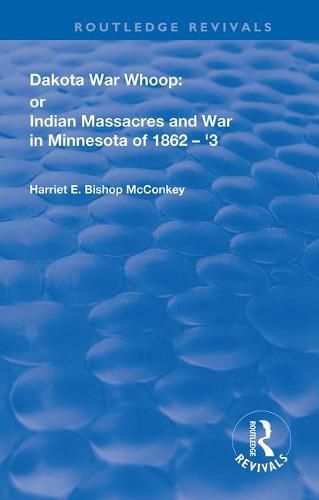Readings Newsletter
Become a Readings Member to make your shopping experience even easier.
Sign in or sign up for free!
You’re not far away from qualifying for FREE standard shipping within Australia
You’ve qualified for FREE standard shipping within Australia
The cart is loading…






First published in 1970, this volume from Mrs Harriet E. Bishop McConkey, a pioneer schoolteacher of St. Paul, Minnesota, was part of the first wave of contemporaneous accounts from Americans in 1863 documenting their perspective of the Sioux Uprising between the 17th of August and the 26th of September 1862. At least 450 settlers and soldiers were killed, depopulating large areas. Although not a direct eyewitness to events, Harriet McConkey was on the fringes of the action in St. Paul and gathered material firsthand from the participants themselves, enabling her to convey the settlers’ story with profound emotional involvement and intimacy, though with equally profound bitterness for the Native Americans. McConkey made little attempt to explore their motivations in the form of famine, late payment and poor treatment. Though imperfect, hers remains an important account documenting the settlers’ experience of the event which began a succession of wars over thirty years, ending at Wounded Knee, South Dakota in 1890.
$9.00 standard shipping within Australia
FREE standard shipping within Australia for orders over $100.00
Express & International shipping calculated at checkout
First published in 1970, this volume from Mrs Harriet E. Bishop McConkey, a pioneer schoolteacher of St. Paul, Minnesota, was part of the first wave of contemporaneous accounts from Americans in 1863 documenting their perspective of the Sioux Uprising between the 17th of August and the 26th of September 1862. At least 450 settlers and soldiers were killed, depopulating large areas. Although not a direct eyewitness to events, Harriet McConkey was on the fringes of the action in St. Paul and gathered material firsthand from the participants themselves, enabling her to convey the settlers’ story with profound emotional involvement and intimacy, though with equally profound bitterness for the Native Americans. McConkey made little attempt to explore their motivations in the form of famine, late payment and poor treatment. Though imperfect, hers remains an important account documenting the settlers’ experience of the event which began a succession of wars over thirty years, ending at Wounded Knee, South Dakota in 1890.